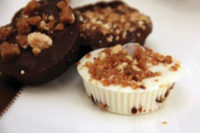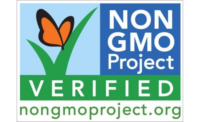Michael Holahan, owner of the Pennsylvania General Store, likes to joke that if you can buy it in his shop it was made in his state, unless it says Pennsylvania or Philadelphia on it — then, it was most likely made in China.
Holahan, founder and owner of the business, was equal parts lucky enough and smart enough to be part of the buy-local movement years before buying local was cool.
In fact, it’s been exactly 25 years since he first started his company — now a combination of a 700-sq.-ft. retail shop and a 5,000 sq.-ft. warehhouse used to run a mail-order business — and with just under $2 million in sales annually, the future is looking sweet.
It hasn’t been easy by any means though. When he was first getting started, people just didn’t seem to understand why he wanted to focus on selling locally made products.
“I might as well have told them I wanted to sell things made on Mars,” Holahan explains. “It was really an oddity 25 years ago. A couple people said to me, ‘Why would anybody care where it was made?’”
But even he didn’t grasp the full potential at first. Instead, he was more focused on lunch — or rather a bunch of lunches. Holahan’s original plan was to sell box lunches made with ingredients sold by vendors at Reading Terminal Market, where his shop is now.
“I borrowed every nickel I could find. I decided I would do a really cool looking box. What the container looked like was probably disproportionately important to me,” he recalls with a smile.
Then, the first Christmas season rolled around, and Holahan had a eureka moment.
“I said, ‘There’s a lot of people walking through the Reading Terminal Market and I’m not selling them anything,’” he explains.
So he called up a trusted friend and pitched an idea for selling gift baskets.
“And she says, ‘I don’t want to hurt your feelings, but you are a moron. You have no money for inventory,” Holahan says.
That’s when he did want any successful entrepreneur does — he adjusted his plan, again.
“I thought about it, and I said, ‘Well, I can get things from the local shops. I’ll just buy a little bit at a time,’” he says. “We just sort of landed on doing gift baskets from local products and I did order a couple things like Wilbur Buds. And then of course, people said, “Can I just buy that jar of apple butter? I don’t want the whole basket.’”
As someone with a natural instinct for doing right by others, he didn’t feel right about selling standalone products he had bought in the market though, given that the merchants he had bought them from were trying to sell the goods themselves.
As fate would have it, one of the stores in the market known for selling apple butters and maple syrup went out of business, leaving the door open for him to sell the products himself.
Eventually, the product sales overtook the box lunch sales, and 25 years later, he’s still successfully selling local goods; or to be more specific, hundreds of local goods.
|
At a Glance: Pennsylvania General Store |
|
Retail store: Reading Terminal Market 12th and Arch St., Philadelphia Warehouse: 228 Krams Ave., Philadelphia Employees: 12 in the store, and between 6 and 30 in the warehouse depending on the time of year. Sales: About $2 million annually. Website: www.pageneralstore.com |
“We try to represent as much as what’s going on in the state as we can,” Holahan says. “You can cram a lot of stuff and still keep it reasonably neat in a 700-sq.-ft. store.”
The shop carries a slew of Keystone State favorites, such as jam, jelly, pancake mix, corn relish, Pennsylvania German Crafts, Pennsylvania folk art creations, redware pottery and Scherenschnitte paper cuttings.
However, there’s one local product Holahan didn’t initially intend to sell — chocolate.
“I didn’t know 25 years ago that Pennsylvania was chocolate central,” he says in defense of his decision.
He quickly learned though, as customers saw his sign proclaiming that his store sold Pennsylvania-made products and kept asking if he sold candy.
“I was like, ‘No, but I have this apple butter that’s made from a recipe that’s 100 years old,” he recalls.
Lucky for Holahan, his then-girlfriend Julie intervened.
“She said, ‘Have you noticed that these people are trying to give you money and you’re saying no to them?’” he explains. “And I was like, I have noticed that.”
So, he took her advice to started selling candy. He also ended up marrying her.
“The woman was smart enough to tell me to shut up and take the customer’s money,” Holahan says. “It has become a bigger piece of what we do than I intended, but if you are a store that’s going to sell foods that are made in Pennsylvania, you better sell chocolate.”
Aside from being unaware of just how rich his state’s chocolate history was, Holahan says he had another reason for initially resisting offering the product.
“I thought, if we sell more candy and cookies, that means we’re more of a tourist shop,” he explains. “Now, I have more repeat local customers with the candy and cookies than I did before.”
Holahan attributes the shift to consumption time. Whereas a person could take four months to use a jar of apple butter, they could be back later the same day to buy another piece of candy.
His selection probably doesn’t hurt much either — the list of chocolate brands he sells is nearly as expansive as his home state’s history with the product. Among the choices are Ashers, Lores, Zitner’s, Wilbur’s, Eclat, Wolfgang, Goldenberg’s, Neuchatel, Just Born and, of course, Hershey.
“So you have supermarket chocolate. You have companies like Ashers, that make a really good decadent chocolate... and then you chocolate from Eclat, which is sort of a French-style chocolate,” he explains. “We have new wave chocolatiers, and then we have Neuchatel, a fourth-generation Swiss chocolate maker.”
Creating the right retail atmosphere for the diverse product assortment can be tricky though.
“What we try to do is say, Pennsylvania is all these things. We have the heart of industrial industry here and we have just as many artisan chocolates,” Holahan says. “My store is a not a junk place, it’s a nice busy store, and I think we do a pretty nice job of displaying things, but it doesn’t look like a temple, so it’s just sort of a thing that we try to navigate.”
Among his favorites are theZitner Butter Crack Eggs. The treat is offered almost exclusively in Pennsylvania, but Holahan had no idea how rare it was growing up.
“It’s a little oblong chocolate, it sort of looks like one Almond Joy,” Holahan explains. “And they run this dark chocolate over it and then [add] toasted coconut and then another coating of chocolate. It’s an example of a nice piece of chocolate making that you really wouldn’t expect when you look at it. You’re not like, ‘Oh, this would be a culinary delight.’”
Now, about two-thirds of his products are cookies and candy. However, the store relies on a different business model than a traditional candy store. For example, whereas a confectionery shop might have a lot of sales during a holiday such as Easter, he does more consistent business year round.
“The week after Easter, I’ll be busier than they are because they’ll still be thousands of people coming through the Remington Market,” he says. “It’s just a different world.”
That’s not to say Holahan doesn’t see his share of seasonal sales though, they’re just not at the brick and mortar shop. Half of the gift baskets are sold at Christmas time.
At first, the seasonal influx for those left them unsure about their space needs. The problems started about 10 years into the business, when Christmas orders led them to rent extra space on a temporary basis.
“For two or three months, we’d find some unused warehouse space, and move in,” Holahan says. “We were gypsies. Sometimes we ended up in the same warehouse. Sometimes we didn’t.”
After doing that until 2002, they hit a breaking point. By the end of the Christmas season, his wife Julie was three weeks away from having twins, and she just couldn’t take the stress of constantly moving in and out of temporary spaces. So, they decided to finally get some permanent warehouse space.
“We sort of permanently separated the mail order business from the retail business,” Holahan says.
A big part of the success for the mail order has been the Internet, allowing them to target potential customers by buying Google Ad words such as Zitner’s, and helping them reach clients they never would have connected with before.
“When we started the business, I said, we have two types of customers. One, is someone who lives in the area and wants to send a gift, [two is someone] who used to live here,” Holahan says.
Back in 1987, he just couldn’t figure out where to advertise to reach the second group.
“Fast forward to 2000 and all of a sudden people are using Google to find everything they ever wanted to find,” he says.
Over the years, Holahan not only has adapted to new technology, he’s also gained a respect for those who’ve managed to stick it out in the confectionery industry year after year after year.
“I’ll meet chocolate makers and maybe they’re using a ‘more expensive chocolate’ and they’ll make some derogatory remark [about another company],” he says. “And I’ll look at them and I’ll say, ‘You know what? Those guys have survived in the food industry for generations. And when you’ve managed that, we can talk.’”
It’s the kind of thing you start to respect after a while, Holahan says.
“Especially these guys that are sort of in the middle, that have lasted three, four generations. Those guys are sort of my heroes,” he explains.
With that kind of appreciation for chocolate makers, it’s no wonder Holahan goes above and beyond to maintain a strong relationship with all of his vendors.
It’s a bond he’s even carrying over to the company’s anniversary celebration. This Christmas — the 25th anniversary of when they officially started selling local goods — they’re planning to create a special catalogue featuring stories about the people whose products they’ve been selling.
“None of my vendors can live off my business, so I’m happy when they’re doing well, because that means when I want to order from them, they’ll still be there,” Holahan explains. “There’s people whose products I’ve sold for 20, 25 years and if I’m in a jam, they take care of me.”
With the right amount of luck, and smarts, Holahan’s own kids — Will, 13, and twins Isabella and James, 10 — one day could be among the lucky few whose family businesses have lasted generations.
“I’m very lucky,” he says. “I’ve gotten to do this crazy thing that seemed like a silly idea and had a lot of things line up for me so that I had time to learn from my mistakes. We’re a small little business. I haven’t built an empire, we’re talking about a little regional business. But we were able to survive our mistakes.”




















